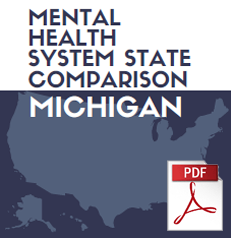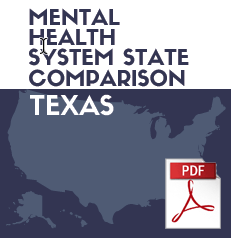State Comparison Project
A Note on the Case Study
Local mental health authorities have been on the frontlines for managing and providing care in community settings since widespread deinstitutionalization in the 1960s. However, there are wide variations in how states organize their local public mental health authorities. Given the increasing demand for mental health services, the launch of 988, a nationwide behavioral health crisis line, and the growing recognition of community-based approaches to whole person health and human services, the role of local authorities is increasing in importance.
Why The Measures?
To better understand the existing landscape of local mental health authorities, we compared two states with robust public systems: Texas and Michigan. This case study succinctly identifies current authorities and structures for the behavioral health systems, their relationship with Medicaid-the largest federal payer for mental health services, and how these systems are positioned to interact with the crisis continuum as 988 is built out.
The goal of this case study is to provide a variety of stakeholders with a better understanding of who their local mental health authorities are, how they came to be, and their relevancy to current behavioral health issues.

